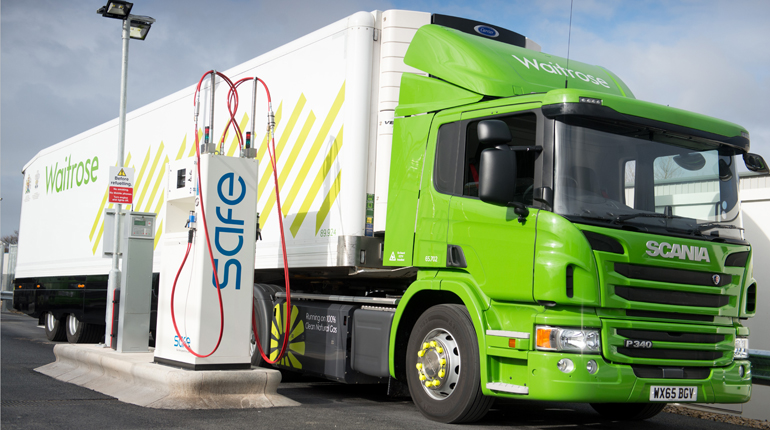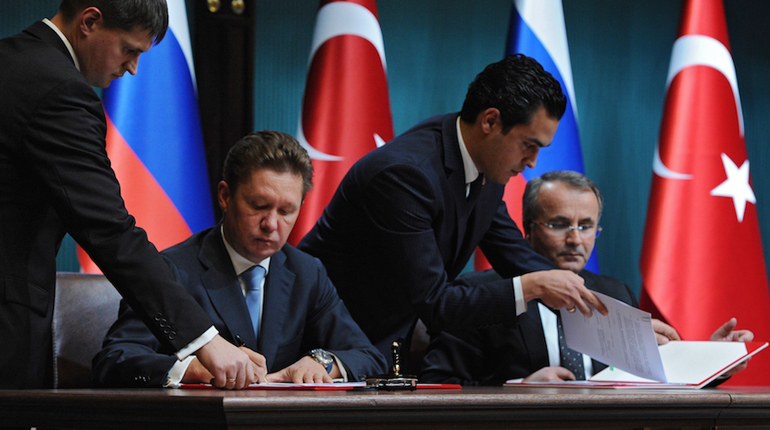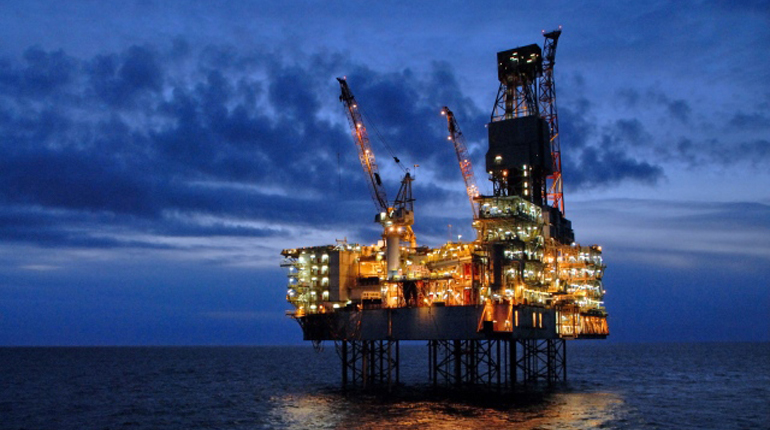 A gas-fuelled HGV in the UK. Trucks offer the best prospects for gas as a transport fuel in the EU. (CNG Fuels)
A gas-fuelled HGV in the UK. Trucks offer the best prospects for gas as a transport fuel in the EU. (CNG Fuels)
The European Commission’s virtual omission of NGVs in its low-emission transport strategy paper shows gas is facing an uphill struggle to crack the European transport market.
The commission launched its new low-emission transport strategy last week, which it said aims to accelerate the transition towards low- and zero-emission vehicle technology. The plan provides a clear policy signal for the alternative transport sector.
The strategy defines low-emission vehicles as those that emit less than 50g of carbon dioxide per kilometre. This includes some electric/petrol hybrids, fully electric cars and fuel cell vehicles such as those powered by hydrogen. It remains unclear if the commission considers gas powered vehicles as low-emission vehicles.
A commission spokesperson said gas was ‘implicitly mentioned’ in the strategy. "Gas is expected to be increasingly used as an alternative for marine fuels in shipping and for diesel in lorries," the spokesperson told Interfax Natural Gas Daily.
Alongside the strategy, the commission also launched two public consultations on the monitoring of emissions from heavy-duty vehicles and on the revision of the carbon dioxide emission performance standards for light-duty vehicles. New legislation is likely to follow after the consultations have been completed.
Chris Le Fevre, senior visiting research fellow at the Oxford Institute for Energy Studies, suggested the strategy would not help gas to gain market share in the transport sector.
"I think there would need to be some very specific restrictions on particulate emissions to make a large-scale switch to LNG in heavy goods vehicles [HGVs] likely – the case for a big push to LNG in HGVs on greenhouse gases alone is harder to make," Le Fevre told Interfax Natural Gas Daily.
"The prospects in passenger vehicles are already very low and the biggest opportunities are for LNG in marine and in some HGV applications," he added.
Electric vehicles (EVs) have an immediate advantage over their NGV competitors because they can be recharged privately at people’s homes. An EV charging network can also be established relatively cheaply and easily in countries with a comprehensive and reliable power grid, Le Fevre noted.
Best chance for trucks
The HGV market could offer the biggest chance for gas because of the state of battery technology.
Although developers have made leaps in creating batteries for passenger cars, HGVs pose a more challenging problem. Truck batteries need to be even more powerful, durable, and long-lasting than those for passenger vehicles. A previous study by IHS Energy showed the HGV market has great potential to create demand for gas and to challenge oil’s monopoly in the transport sector.
Trucks make up less than 5% of all road vehicles in the EU, but they are responsible for 25% of the road transport sector’s CO2 emissions. Unlike the United States, China and Japan, Europe has no fuel efficiency standards for trucks – which has resulted in limited innovation and no change in the carbon footprint of HGVs over the past two decades, the commission said.
The EU’s strategy does see a place for gas to be "increasingly used as an alternative for marine fuels in shipping and for diesel in lorries and coaches". But again, it pushes for alternatives to fossil fuels and mentions that the potential of gas in transport "can be increased significantly with the use of biomethane and synthetic methane (power-to-gas technologies)".
The strategy builds on the existing directive for alternative fuel infrastructure, which requires member states to implement common standards and build supply and support networks. Under the directive, member states have to design policy frameworks for rolling out publicly available electric recharging points and gas filling stations – and, optionally, hydrogen filling stations – by November this year.
The German Association of Energy and Water Industries (BDEW) said it welcomed the strategy, especially the fact that it included all sectors in CO2 reduction.
"To quickly implement [the strategy], the federal government is now asked to design appropriate measures," Stefan Kapferer, chairman of the BDEW’s executive board, said in a statement.
The EU’s transport sector depends on oil for about 94% of its fuel. The commission hopes to increase the share of low-emission energy to 15-17% of transport energy demand in 2030. The EU’s strategy follows a push by the Netherlands and Norway to ban all sales of non-electric cars from 2025. The legislative proposals for the bans have not been passed, but they indicate an emerging willingness by European governments to move away from petrol- and diesel-based transport.
Across the Atlantic, the administration of US President Barack Obama said last week it will invest $4.5 billion to build electric charging stations. The aim is to complete a US network by 2020 that will make nationwide zero-emissions travel possible.








Talk to us
Natural Gas Daily welcomes your comments. Email us at [email protected].